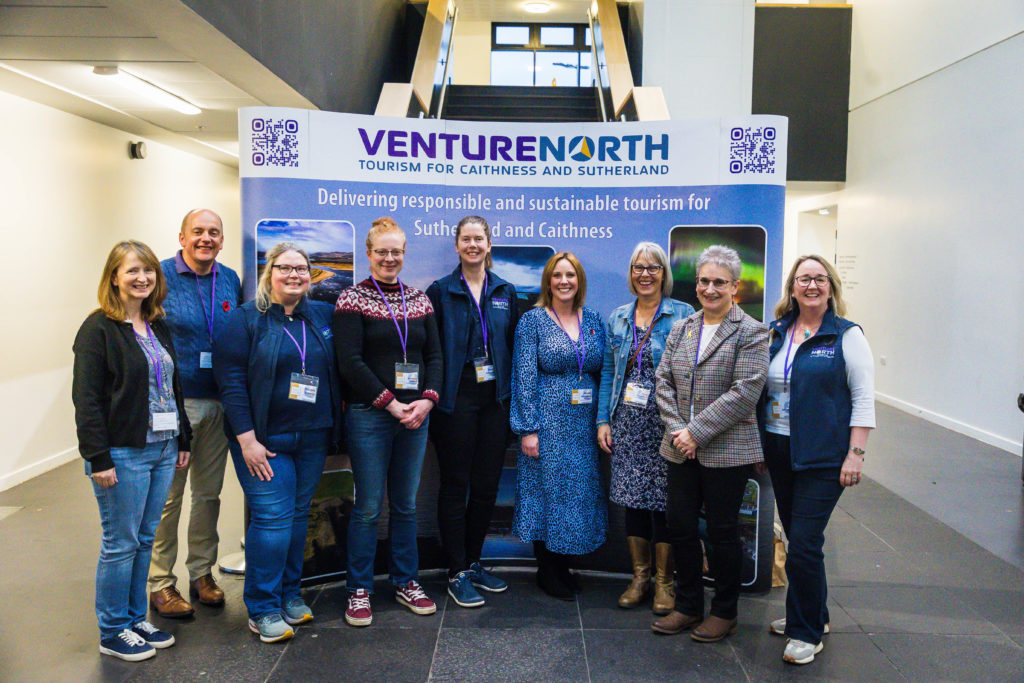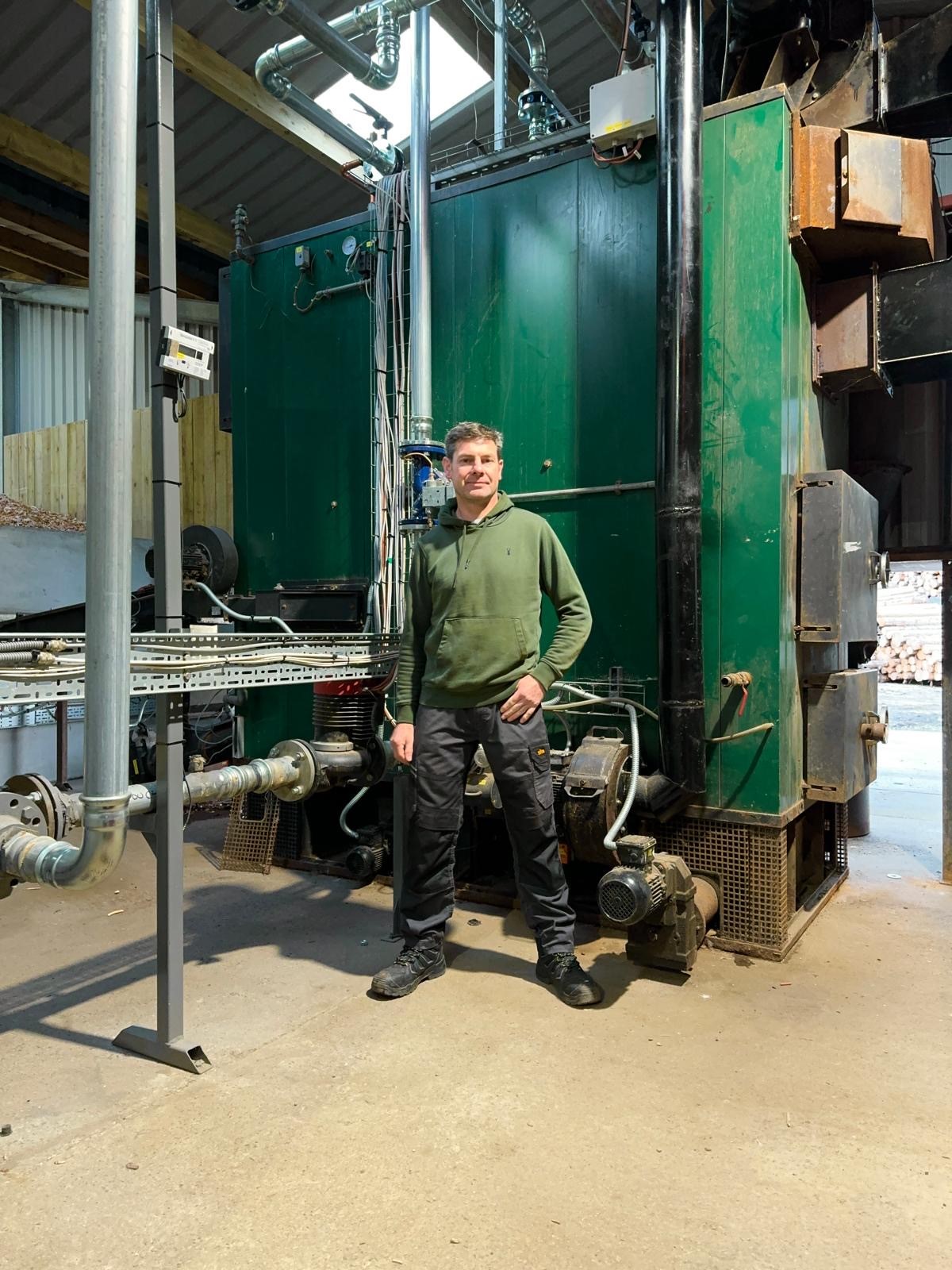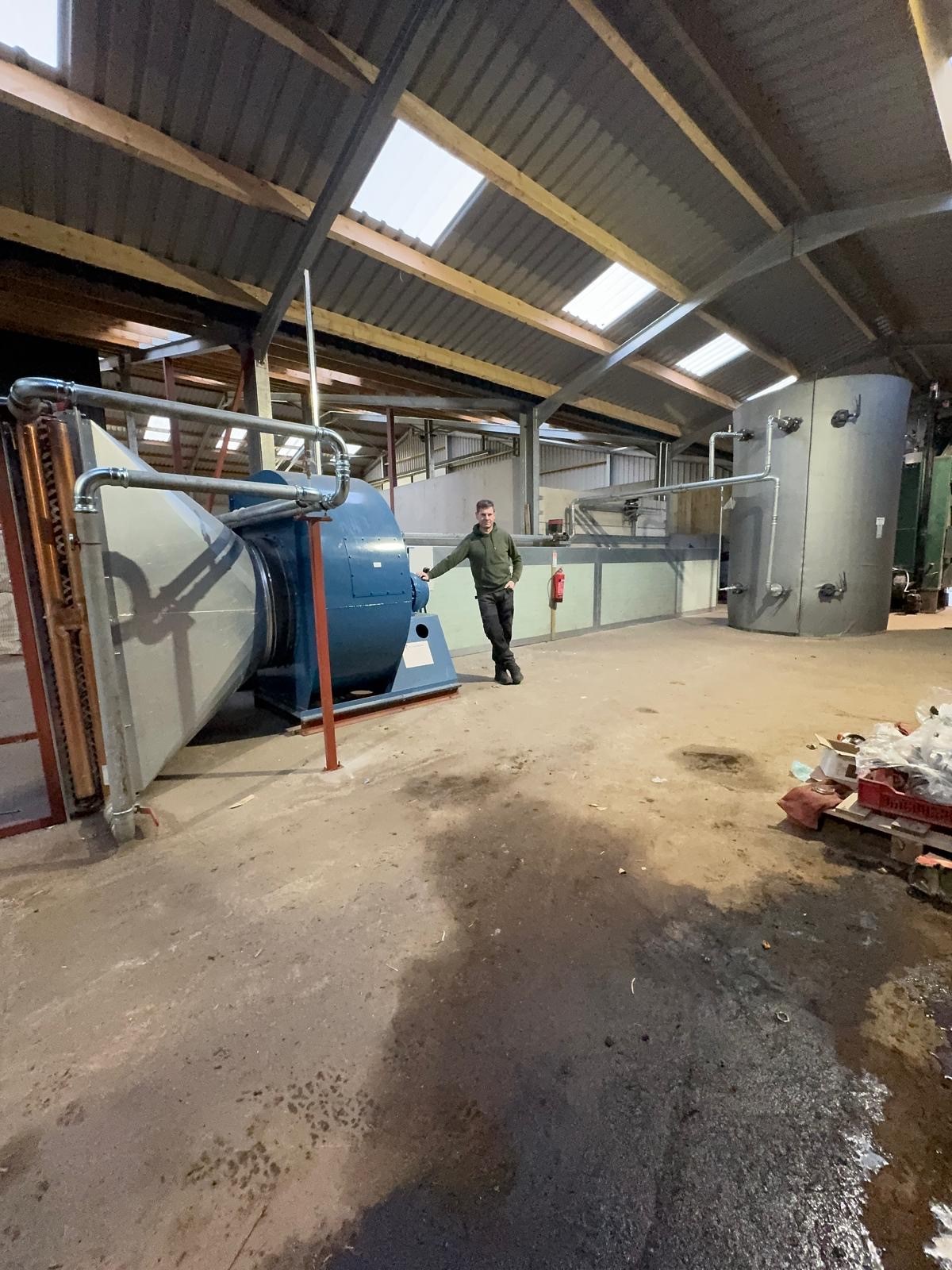
Norscot, a leading manufacturer of timber frame kit homes, windows, and door is delighted to announce its partnership with Origin, the UK’s leading manufacturer of bespoke aluminium doors and windows. This collaboration positions Norscot as the most northerly supplier of Origin’s renowned, award-winning range of products, bringing unparalleled style, performance, and functionality to homes and businesses across the Scottish Highlands.

Expanding Horizons with Origin’s Premium Aluminium Range
With over 40 years of experience in manufacturing superior-quality windows, doors, and timber-frame homes, Norscot’s partnership with Origin expands its offerings to include a full suite of premium aluminium products. These include:
- Windows (OW-70 and OW-80): Offering unmatched thermal performance, these customisable windows suit both modern and traditional homes.
- Front Doors: Durable, secure, and stylish, these aluminium front doors are available in a wide variety of colours and designs to enhance any home’s curb appeal.
- Bi-fold Doors: Sleek, secure, and stylish, these doors offer seamless indoor-outdoor transitions while maximising natural light.
- Sliding Doors: With ultra-slim sightlines and panoramic views, these doors combine elegance with exceptional energy efficiency.
- Internal Doors: Origin’s internal doors provide a bespoke and classic way to divide your space with a sleek, modern design. Available in various configurations, including French, single, and corner doors, they feature a classic Georgian style that complements any interior.
Origin offers over 150 RAL colours for their aluminium products, allowing colour matching or contracts to existing décor. Finishes are available in satin, matt, or gloss, with textured options also offered.
All Origin products are proudly crafted in the UK and come with an industry-leading 20-year guarantee, ensuring peace of mind for homeowners and property developers alike.

A Perfect Partnership for Scotland
Norscot’s local expertise complements Origin’s reputation for innovation and quality. Located in the Scottish Highlands, Norscot is uniquely positioned to cater to the specific needs of northern customers, offering tailored advice and reliable service throughout the design, manufacturing, and installation process.
“This partnership is a fantastic opportunity to bring Origin’s cutting-edge aluminium products to customers in the Scottish Highlands,” said Iain Sutherland, Norscot Area Sales Manager in Inverness. “Our shared commitment to quality and sustainability ensures we can deliver superior solutions for even the most demanding projects.”
Discover the Best in Aluminium Design
Customers can now explore Origin’s full product range through Norscot’s showroom or online at www.norscot.co.uk. With expert guidance and installation services, Norscot ensures a seamless experience from selection to installation.
Agilico are delighted to announce that they have won the 2024 Environmental Excellence Award at the Print IT Awards in December, the UK’s premier awards event for the managed print and document technology sector. This annual celebration recognises outstanding achievements and innovation, bringing together the industry’s top players for an unforgettable night.
In the highly competitive Environmental Excellence category, Agilico beat global heavyweights such as HP, Ricoh, and Epson to claim the title with their innovative Agilico Zero circular first multifunctional print devices.
As the UK’s largest independent managed print provider Agilico is proud to lead the way in sustainability within their industry, with a commitment to both high performance and environmental responsibility.
Their Agilico Zero MFDs are the cornerstone of a modern sustainable print environment – lightly used, quality refurbished technology, offering a cost-effective, eco-friendly solution that performs like new.
In 2024 Agilico saved nearly 1,500 tonnes of CO₂ emissions with their refurbished Agilico Zero devices and as more customers across the UK choose them, they’re excited to see its positive impact grow each month.
Contact Agilico here to get set for greener printing and find out everything you need to know about their award winning Agilico Zero refurbished devices.

A small, Inverclyde printing company which has carved a niche for itself with specialist work has strengthened its executive team with the appointment of a prominent Scottish business figure as a non-executive director.
Port Glasgow-based Love & Humphries, which bills itself as The Clever Printing Company, has secured the services of Malcolm Morrison, a business strategist and transformation specialist with a proven track record in scaling up organisations.
It is the latest in a number of non-executive roles assumed by Mr Morrison, a former Clydesdale Bank partner and Santander relationship director, who is also Director of Highland-based GMG Energy, a timber and biomass producer which has become one of the most environmentally-aware enterprises in the region.
He will make a creative contribution to the company by providing independent oversight as well as offering guidance on a wide array of business issues, especially those which relate to small and medium enterprises.
Philip Wilson, Director of Love & Humphries, who oversees a small team at the company, said: “Everyone in the firm is delighted that we have been able to attract a business personality of Malcolm Morrison’s calibre for the important non-exec role.
“He has a huge range of experience in a wide variety of different sectors and has made valuable contributions to other enterprises across Scotland. I am sure that he will be instrumental in helping us to focus on our business goals.
“The print industry in Scotland has always been a challenging environment, especially at a time when technology is changing so fast and altering the way we operate. We are very pleased to have Malcolm on board to assist us with these challenges and opportunities.”
Malcolm Morrison said: “Love & Humphries may be a small business at the moment, but I am sure that there is terrific potential within Philip and his team, as they have proven by opening up new avenues for business expansion, including exports.
“I will be delighted to offer my experience to assist growth in the company in any way I can and I look forward very much to working with them.”
Love & Humphries has recently secured a significant order from a US customer for SuperTuffMenus®, a type of wipeable, washable menu card used by major brands to enhance presentation.
It has printed poetry books for clients and has also made great strides with uncoated paper, using UV curing inks to speed up drying times and avoid production hold-ups.
Highland BlindCraft is celebrating a remarkable year, having received two prestigious awards and announcing an exciting new partnership. At the Highland Business Awards 2024, the organisation was honoured with Employer of the Year, recognising its dedication to providing an inclusive and supportive workplace. Additionally, Highland BlindCraft secured the Loganair Award for Excellence in Customer Service at the Prosper/Highlands and Islands Business Excellence Awards, reflecting its commitment to exceptional service and quality craftsmanship.
These achievements reflects the hard work and perseverance of the team, many of whom have overcome personal challenges to excel in their roles. Highland BlindCraft continues to provide employment, training, and education for individuals with disabilities, crafting premium beds and mattresses for homes, hotels, and businesses across Scotland.
Further marking its growth, Highland BlindCraft has partnered with Highland Coast Hotels to produce bespoke beds and mattresses for their stunning properties throughout the Highlands. This collaboration expands the organisation’s reach into the hospitality sector, ensuring guests enjoy unparalleled comfort. Read more here.
In addition, Highland BlindCraft remains committed to contributing to the local community and supporting causes that matter. They recently joined the Highland Community Lottery, where ticket sales support its mission and offer participants the chance to win exciting prizes. To support Highland BlindCraft and join the lottery, click here.
With the continued support of staff, partners, and customers, Highland BlindCraft looks forward to creating new opportunities and crafting comfort with purpose.

Caithness filmmaker John Baikie has been selected to participate in Screen Scotland’s prestigious short film scheme, Little Pictures, a programme run by GMAC Film in Glasgow. John’s documentary proposal was one of only eight selected from hundreds of entries, marking a significant achievement in his filmmaking career.
The Screen Scotland funded short film scheme aims to support emerging talent in the Scottish film industry by providing filmmakers with the opportunity to develop and produce original short films. John’s selection places him amongst some of Scotland’s up and coming creative voices, and offers him the resources and mentorship needed to bring his vision to life over the coming months.
“I’m excited and honoured to be selected for this incredible opportunity,” said John. “Being chosen from such a competitive pool of submissions was a surprise, especially coming from such a remote area. I’m excited to work with the talented team at GMAC Film to develop my project. It’s at the early stages, but it’s already been a huge learning experience.”
John’s short documentary, “On The Surface” will explore the journey of a disabled girl who has used surfing as a way to rediscover life and inspire others as she trains towards a long term goal of the Paralympics in LA.
The scheme is part of a larger effort by Screen Scotland to nurture and develop local talent and encourage a thriving film industry in Scotland. GMAC Film, based in Glasgow, has been instrumental in helping filmmakers from across Scotland get their start in the industry.
John feels his selection for this short film scheme is a significant milestone in his filmmaking journey and a big opportunity to have his work recognised by a wider audience.
John runs a video production and photography business in Caithness, serving businesses with high quality commercial imagery. Well known throughout the country for his photography work, he has developed the video element of the business in recent years, combining his documentary passion with his commercial work.
A highly efficient renewable powered fuel boiler funded by Highlands and Islands Enterprise (HIE) has been installed by Halladale-based GMG Energy and is now being used to help kiln-dry logs for domestic stoves throughout the Highland and beyond.
And, said owner-director, Malcolm Morrison, after a professional installation process masterminded by consulting engineer, Andy Groves, the boiler is now operating at full tilt, fuelled by the wood chips and sawdust created as a by-product of GMG’s timber sawmill.
Mr Morrison said: “I am delighted that, thanks to HIE Account Manager, Keith Muir who helped us with a capital expenditure grant and Andy’s expert guidance, we have a first-class boiler which plays a critical role in powering the kiln dryer which provides us with tons of timber logs to heat the homes of households across the Highlands.”
Established in 2016, GMG Energy operates a state-of-the-art sawmill on a farm in the Halladale Strath between Tongue and Thurso, producing kiln-dried logs, chip and sawdust for consumers and wholesalers.
Said Andy: “The boiler is quite technically sophisticated and well capable of being used in an energy efficient manner. It took a while to install it due to having to upgrade the electric capability at the sawmill, but the results that Malcolm has been getting from it are first class.
“I like to think that between us, we have made a good contribution to promoting the benefits of the circular economy.”
GMG Energy makes door to door deliveries throughout the north Highlands and manufactures timber products for agricultural businesses, builders and consumers. It also supplies bark for garden centres, sawdust for livestock and dried chip for supply to local businesses and councils.
GMG Energy is committed to replacing every log of timber it uses, planting about 20,000 trees in 2021. As a result, businesses across the North and the Islands can reduce their carbon footprint by sourcing locally.

Taste North 2024 welcomed over 2,100 visitors, setting a new attendance record for the annual food and drink festival organised by Venture North. Now in its ninth year, the event showcased the best in local produce, featuring 56 exhibitors, including exciting new businesses from Orkney, the North Highlands, and Kinross.
Renowned Scottish celebrity chef and restaurateur Tony Singh MBE captivated audiences with live cookery demonstrations, sharing his culinary expertise through mouth-watering recipes such as Haddock with Lime and Ginger Butter, Bombay Aloo, and Lamb Vhura with Dalz. Assisting Tony was Harris Turnbull, a professional cookery student from UHI NWH Thurso and Castletown Hotel, highlighting local talent.
Tony participated as a judge in the Taste North Challenge, an event celebrating exceptional culinary creativity. In the 15 and Under category, Robyn Speirs showcased her talent with a Blackcurrant, Lime, and Pistachio Cake, crafted using homegrown blackcurrants and local eggs. In the Open category, Rachel Patterson impressed with her Mini Marmalade Battenbergs, made with Three Fruit Marmalade from Donna’s Crafts in Latheronwheel. Finally, in the Commercial Operator category, Emma Gordon of Bonbon Bakery stood out with her Spiced Rum Carrot Cake, featuring Ice & Fire Distillery’s Caithness Raiders Dark Spiced Rum.

Taste North was also nominated for the 2024 Highlands and Islands Thistle Awards in the Outstanding Cultural Event or Festival category, highlighting its remarkable contribution to showcasing the region’s exceptional food, drink, and cultural heritage. Taste North will celebrate its 10th anniversary milestone in 2025.

Earlier this year, Norscot, a manufacturer of timber frame kits and fenestration systems, received the Digital Innovation Fund Rapid Demonstrator Award from the Smart Manufacturing Data Hub (SMDH)
This award recognises the Company’s commitment to innovation and sustainability in UK manufacturing. The six-month project aims to transform the Company operations through digital technologies and sustainability practices, focusing on:
- Optimising material usage
- Implementing smart inventory management
- Quantifying environmental benefits using Life Cycle Assessment (LCA)
- Sharing knowledge with the UK manufacturing community
Key achievements to date include comprehensive data collection and analysis, including the development of a preprocessing pipeline and upload of a baseline dataset to the Manufacturing Data Exchange Platform (MDEP).
The project has also produced a Minimum Viable Product system architecture with a robust database structure and implemented a pattern recognition model for material storage and usage trends. Analysis of this data has generated valuable insights for improving materials storage design and optimising handling processes.
The project’s progress was showcased through a poster at the Caithness Circular Economy Fair in Thurso, further engaging with the wider community.
Future focus areas include:
- Material offcut reuse optimisation
- Testing and dissemination of findings
This initiative enhances Norscot’s efficiency and sustainability while contributing valuable knowledge to the manufacturing sector. The solution is designed to be replicable across other manufacturing settings, particularly for SMEs. For further information or collaboration opportunities, feel free to contact Norscot via email info@norscot.co.uk
Norscot appreciates the support of the SMDH Digital Innovation Fund and remains committed to expanding its digital capabilities, promoting sustainability, and supporting growth within the UK manufacturing ecosystem.
Exciting progress continues at Sutherland Spaceport, as Orbex move closer to establishing the UK’s first vertical launch spaceport on the north coast of Scotland. Work packages for Phases 3 and 4 of construction are now open for tender, marking another key milestone in the development of this state-of-the-art facility.
Sutherland Spaceport will play a crucial role in the UK’s space industry, supporting environmentally sustainable launches and fostering innovation in satellite technology. This is your chance to contribute to a pioneering project that will position Scotland at the forefront of the global space sector.
The following trade packages are currently open for tender:
• Earthworks & Excavations
• Concrete Foundations and Slab
• Reinforcement to Concrete Items
• Drainage
• Steel Frame (supply only, install only, or supply and install)
• Roof and Wall Cladding
• Gutters, Downpipes, and Superstructure Drainage
• External Doors
• Windows
• Roller Shutter Doors
• Mechanical Installations (e.g., plumbing, ventilation, heating)
• Electrical Installations (e.g., lighting, power, data)
• Fencing
• External Concrete (similar to concrete foundations and slab)
If you’re interested in applying or would like more information, please contact Bryan McGhie by 29th November at bmcghie@nascentcc.co.uk
Don’t miss this opportunity to be part of the development of this exciting project!





